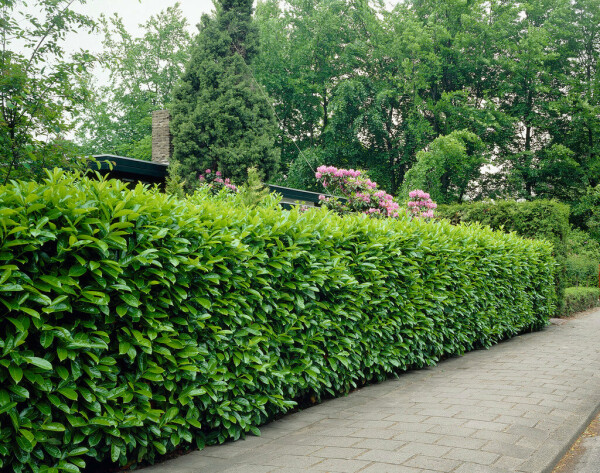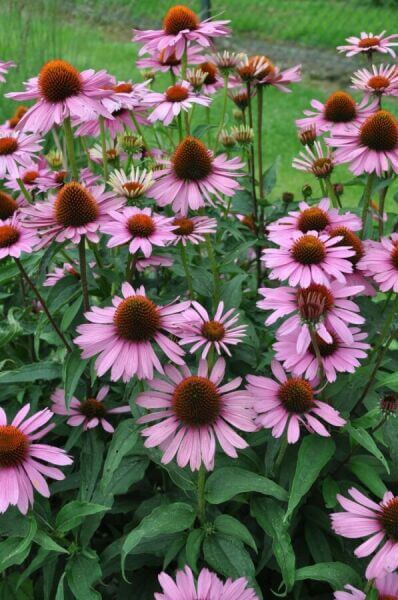Hedge Plants For Noise Reduction
Hedge Plants For Noise Reduction
Blog Article
Top Hedge Plants For Your Garden
Boost your garden's allure with rich hedge varieties such as Yew (Taxus), Thuja, Laurel, Photinia, and Bamboo, commemorated for their structural integrity and ecological benefits.
Yew and Thuja provide evergreen protection and winter durability, while Laurel uses rapid development and broad, aromatic leaves.
Photinia adds seasonal appeal with its lively red foliage, and Bamboo provides a low-maintenance, peaceful atmosphere.
These hedges improve air quality, minimize noise, and create tranquil, personal areas.
Proper planting, spacing, and upkeep make sure vigorous development and ecological harmony.
Check out how these lavish ranges can elevate your garden's charm and wellness.
Secret Takeaways
Change Your Garden With Lush Hedge Varieties
- Select Yew for its dense, evergreen growth and exceptional durability.
- Choose Laurel for its fast growth and broad leaves, making sure fast personal privacy.
- Choose Photinia for its vibrant seasonal foliage, which turns a striking dark red.
- Utilize Bamboo for a low-maintenance, winter-hardy hedge with aesthetic appeal.
- Space plants 2-3 per meter and prune routinely for optimum development and health.
Popular Hedge Plants
When changing a garden with lavish hedge ranges, it's essential to consider popular hedge plants such as Yew, Thuja, Laurel, and Photinia due to their unique characteristics and advantages.
Yew (Taxus) is extremely respected for its durability and thick, green development, making it a prime option for withstanding landscapes.
Thuja is kept in mind for its evergreen foliage and robust winter season durability.
Photinia adds seasonal vibrancy with red leaves that darken in time, developing vibrant visual appeal.
Laurel uses fast growth and fragrant, broad leaves, ideal for quick personal privacy.
In Addition, Bamboo is an exceptional option for atmosphere, offering a low-maintenance, winter-hardy option that enhances the garden's aesthetic with its sophisticated, swaying walking canes.
These selections accommodate a variety of horticultural requirements and choices.
Benefits of Garden Hedges
Garden hedges provide a plethora of advantages, making them an important addition to any landscape. These natural barriers are economical to execute and provide substantial wind defense, improving air circulation and adding to noise reduction. The thick foliage of hedges like Thuja and Beech guarantees privacy by blocking exposure, creating a secluded and tranquil environment.
Hedges also play a crucial function in microclimate guideline, providing a steady environment that promotes plant development and minimizes temperature level variations. Their detailed leaf structures filter toxins, enhancing air quality and contributing to a much healthier garden community.
Moreover, hedges master noise decrease, absorbing and deflecting acoustic waves to lower ambient noise levels. This double performance of offering both acoustic and visual privacy enhances the total tranquility and visual appeal of any garden.
Planting and Maintenance Tips
For an effective hedge, meticulous preparation of the planting area is vital. Ensure the soil has appropriate pH and drainage to support strong root advancement.
Space the plants appropriately for the selected types. Water the hedge frequently during its preliminary development phase, adjusting as needed with seasonal modifications.
Carry out a systematic insect control and illness prevention strategy, using natural or chemical treatments when required. Frequently check for aphids, mites, and fungal infections.
Apply mulch to keep wetness and reduce weeds. Seasonal pruning promotes thick development and air flow, vital for plant health.
Following these standards will assist you cultivate a lively, well-maintained hedge that enhances the beauty of your garden.
Spacing and Trimming Guidelines
Spacing and Trimming Guidelines
Appropriate spacing and trimming are important for cultivating healthy, aesthetically appealing hedges. Sufficient spacing guarantees each plant gets adequate nutrients, light, and air flow.
Follow these guidelines for ideal hedge maintenance:
- Spacing: Position hedge plants 2-3 plants per meter to encourage robust growth.
- Pruning Techniques: Regular pruning is essential for maintaining wanted hedge height and shape. Cut brand-new development in summertime and cut back older wood during winter season.
- Seasonal Care: Change cutting approaches and schedules according to seasonal requirements to guarantee plant health.
- Hedge Height: Routinely screen and trim to keep the wanted hedge height and attain consistent looks.
Following these steps will guarantee your hedge thrives, enhancing both the appeal and performance of your garden.
Choosing the Right Hedge
Choosing the Right Hedge
Choosing the appropriate hedge involves evaluating factors such as mature height, foliage density, and ecological strength. Effective hedge plant selection needs understanding each species' development qualities and site-specific adaptability.
For instance, Yew (Taxus) provides outstanding durability and dense development, while Thuja is noteworthy for its winter strength. Additionally, thinking about maintenance requirements is vital; fast-growing species like Laurel or Privet need regular cutting, whereas low-maintenance choices like Bamboo or Ivy may be more suitable for those seeking minimal maintenance.
Environmental aspects such as soil type, light accessibility, and wetness conditions ought to likewise guide the choice process. This cautious technique guarantees the picked hedges will flourish, offering both visual and functional advantages to the garden landscape.
Delivery and Planting Recommendations
To ensure your hedge plants flourish, they need to be delivered by specialized couriers and planted without delay upon arrival.
Follow these essential steps for effective planting:
- Soil Preparation: Enrich the soil with raw material to enhance drain and nutrient content.
- Planting Depth: Produce a trench two times the width and equivalent to the depth of the root ball.
- Watering Techniques: Water thoroughly after planting, keeping the soil consistently damp however not filled.
- Mulching: Apply a layer of mulch to retain moisture and suppress weeds.
Client Assistance and Service
Offered the crucial role of timely support in horticultural pursuits, our consumer support group is available six days a week through telephone, email, and social networks to use skilled advice and swiftly deal with any concerns. Their commitment to quick reaction times ensures customer complete satisfaction by fixing inquiries connected to plant health, optimum planting approaches, and upkeep schedules.

Reaction Time
6 days a week
This detailed support group, strengthened by an outstanding 9.3/ 10 customer rating, highlights our dedication to boosting the gardening experience for each client.
Frequently Asked Concerns
For How Long Does It Take for Hedge Plants to Develop?
Hedge plants typically need one to three years to end up being hedge plants completely developed, with the precise duration differing by species and growing conditions.
Effective care throughout this crucial duration is important for robust development. Consistent watering, alert weed control, and appropriate fertilizer application are critical in promoting strong root advancement.
For instance, fast-growing types like Laurel may develop quicker, while slower-growing ranges such as Yew may take longer. Persistent upkeep accelerates the facility procedure, resulting in healthy and thick hedges.
What Are the very best Hedge Plants for Privacy?
The question of the very best hedge plants for privacy includes evaluating evergreen and deciduous choices.
Evergreen hedges like Thuja, Laurel, and Cypress supply year-round coverage, ensuring continuous personal privacy.
On the other hand, deciduous hedges such as Beech offer seasonal privacy, shedding leaves in chillier months.
Secret upkeep tips for privacy hedges include regular cutting, fertilizing in spring, and correct spacing-- normally 2 to 3 plants per meter.
Furthermore, constant watering and persistent weed elimination are vital for promoting healthy, dense development.
Can Hedge Plants Bring In Wildlife to My Garden?
Yes, hedge plants can draw in wildlife to your garden by providing important benefits like shelter, food, and nesting sites, thus enhancing local biodiversity. For example, yew, holly, and laurel are excellent for attracting birds, while ivy supports a variety of pests.
Nevertheless, it is essential to note that there are some disadvantages, such as increased maintenance to manage pests and routine maintenance. Carefully selecting and keeping hedge ranges can help balance these advantages and downsides, eventually promoting a sustainable and lively environment in your garden.
Are There Any Flowering Hedge Plants Available?
Yes, there are flowering hedge plants readily available that can improve the beauty of your garden.
For instance, Elaeagnus, also called Olive Willow, produces fragrant white flowers in the fall, adding a touch of sophistication.
Photinia, another popular choice, showcases dynamic red leaves that grow into a rich green, creating a vibrant visual impact throughout the seasons.
To ensure these plants prosper, it's important to practice correct pruning methods and seasonal upkeep, such as trimming brand-new growth in the summertime and cutting back in the winter.
These measures will assist maintain the health and visual appeal of your flowering hedges.
How Do I Avoid Bugs in My Hedge Plants?
To prevent insects in hedge plants, employ natural insect control approaches and maintain appropriate hedge care. Present advantageous pests like ladybugs, which prey on hazardous bugs, to create a balanced environment.
Frequently inspect your hedges for signs of problem and promptly eliminate any affected parts to avoid the spread. Guarantee the health of your hedges by using well balanced fertilizers and offering sufficient water.
Make use of mulching to maintain soil wetness and correct spacing to reduce plant stress and promote robust development. These practices collectively help in lessening insect concerns and maintaining a healthy hedge.
Conclusion
In essence, choosing the best hedge ranges such as Yew, Thuja, and Laurel can transform any garden into a serene sanctuary. These plants supply year-round plant, boost visual appeal, and deal practical benefits like sound decrease and wind security.
Appropriate planting techniques, accurate spacing, constant watering, and seasonal trimming are crucial for optimal development.
Trustworthy delivery services and professional consumer assistance ensure a seamless experience from purchase to planting, making it easier than ever to raise your outdoor area.
Garden hedges use a wide range of advantages, making them a valuable addition to any landscape. These natural barriers are affordable to carry out and supply significant wind protection, improving air blood circulation and contributing to sound reduction. The thick foliage of hedges like Thuja and Beech ensures privacy by obstructing presence, producing a secluded and tranquil environment.

Pruning Techniques: Routine pruning is necessary for preserving preferred hedge height and shape. Trim brand-new development in summer and cut back older wood throughout winter season.
Report this page